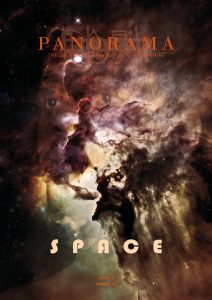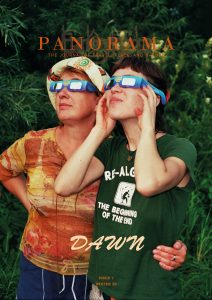My husband’s friends lived east of the city, and whenever we visited, I was jealous of their space. Their living room was wide, the backyard substantial, their dead-end street serene and homely. Our house back then, to the south of the city, faced a busy side road that was rarely quiet, and the place itself was narrow. I couldn’t shake the feeling that living there was narrowing my thoughts. When Duncan’s friends moved and offered to transfer the lease to us, we jumped at the opportunity.
I didn’t think about giving up Unley Road, the main road next to our old house, with its blocks of nice restaurants, grocery stores, cafés and an Oval, a big grassy open space for playing football, where I jogged and watched dogs play fetch in the early morning. My only thought was of the possibilities within this new house twenty minutes away on the other side of Adelaide, on this new, peaceful street. In those first few weeks, I felt like I was on some kind of retreat. The air seemed purer, the outside noiseless save for the magpies and wind chimes. While showering I would gaze into our backyard, with its tall grass and teal painted gazebo, and feel rejuvenated. Sometimes, we could hear gibbons from the Adelaide zoo, kilometres away in the city centre.
My thinking did expand in this wider, open house. We set up my desk by the window overlooking the street, and with that view of the cul-de-sac beyond my computer screen I finished my PhD thesis, dozens of personal essays, and continue to work on a novel. I watched cars reach the end of our street and turn around, frustrated, hoping to get through to Port Rush Road, a parallel highway. But their revving and zooming didn’t fit in on this quiet street, and so I didn’t let it bother me.
Yet, after a few quick walks around the neighbourhood, it was clear what we had given up in the move. Payneham Road, the busy main artery connected to our dead-end street, held virtually nothing of interest to us — no nice restaurants, one overly expensive café, and a grocery store a lonely stroll down that desolate footpath along the main road. There was no Oval, just blocks and blocks of houses. So we stuck to our street.
My husband notices things about the street I never do. He looks at the houses, their eaves and fences, their new coats of paint and solar panels. He knows which cats and dogs belong to which house. He might say, “You know our neighbours with the orange tree?” or “You know the house with the small yappy dog?” And I have to admit that I don’t know which house he means. My eyes are drawn to the trees lining the street, a hodgepodge of old growth gum trees mixed with some newly planted bottlebrush, their leaves swaying in the gentle breeze, and to the sky, so much bluer than where I come from.
I’m not from Australia. Sometimes, it’s easy to forget this. After seven years in Adelaide, this place does feel like home. Then I meet a neighbour who asks where I’m from, and I’m thrown. When I say I’m from the United States, from New Jersey, they often baulk. “I would have never guessed that!” they say. They think I’m from France, Eastern Europe or Ireland. My accent, always mild, hasn’t changed over the years. Adelaideans are used to broader, California or Midwestern accents, and so mine puzzles them. The Adelaide accent puzzled me at first too. Also mild, it sounded British to my ear, and at first I wondered when I’d ever meet a ‘real’ Australian, until I learned that Adelaide was not created as a penal colony like Sydney or Melbourne, but a place where British settlers decided to come of their own free will. As free settlers, their accent was always softer, even as the conditions around them must have appeared harsh and upside down.
It’s the seasonal changes of our street that jolt me back to my American childhood. In the Australian autumn I long for Halloween and Thanksgiving, even though it’s Easter. Cycling the four kilometres home from work at the university, it’s easy to imagine kids in costumes trick-or-treating in the fresh chill, as the trees just begin to go bare. But all the leaves here never truly fall, and when it is time for Halloween — a holiday Australia is trying to embrace — it’s spring. Birds chirp, the sun loiters for a few extra hours, and the street pulses with new life. Not exactly the atmosphere to encounter fear in its many forms.
In the winters, during those few days it gets cold enough to feel like the beginning of a New Jersey winter, I imagine Christmas carols in the end of July. At Christmastime, people on our street display holiday lights, which don’t shine until after 9pm, when the sun makes its descent in the summer. I watch our neighbours pull out Santa and his sleigh, Frosty and Rudolf, and place them carefully on their parched lawns, a wholly unnatural sight in the dry heat of Adelaide. After seven years here, and three on this street, this sense of displacement lingers, and I don’t expect it will ever go away.
There are practices on the street that surprise me and that I’m still attempting to understand, such as hard rubbish. One weekend a year, everyone puts large items they wish to get rid of — TV cabinets, kids’ playhouses, kitchen tables — onto the curb. Most of the items are gone before the Council can come to collect them. People from all over South Australia drive around, poking through the furniture and hurling their favourites into the back of their car or the cab of their truck. Duncan and I sit on the curb outside our house and marvel at how people can have this much to give away, and how others could want it or find room for it in their own homes. Then we find a toy oven for our daughter, or a perfectly nice table for backyard lunches, and soon we’re carrying our own loot down the street.
On those rare occasions when I walk down our street at night by myself, I think about those other shadow lives I could have lived instead. Ones where I had never left the United States, or stayed in Dubai, or never met Duncan at the staff bar on campus and moved onto Singapore or Hong Kong after this stint in Adelaide. Then I walk through our white picket fence, up to our stone façade cottage with its tin roof and navy trimmings, the laundry hanging from rope Duncan strung along our front porch, the barrels of his brewing equipment piled next to the recycling bin, and I’m grateful for the life I chose and built.
When our daughter was born, our interactions with the street changed. It became ours in a way it had never felt like before. From carrying Celia up and down the street at midnight as a newborn, to pushing her in a stroller, to walking with her hand-in-hand, she is fascinated by our street, and the cars, buses, trucks and bikes stuck in traffic on nearby Payneham Road.
She’s different from us, surprisingly so. I always imagined a daughter who would be like me — quiet, reserved, introverted. But at two years old, Celia is another breed entirely. Yelping, darting onto the street, holding our hands for a moment and then running off on her own. The people on the street know her name, but I don’t think they know ours. Celia asserts herself, prattles about her shoes and jumper, and generally charms the people who live on our street that I wouldn’t have known otherwise. Neighbours pile clothes for Celia that their children have outgrown on our porch, and come to her birthday party in our backyard.
We’ve lived here for three years, as long as Duncan and I have been married. Three years is the longest that either Duncan or I have lived in one spot in our adult lives. But our time here is just a blip in the life of this hundred-year-old house. While it is still structurally sound, there are large cosmetic cracks in the walls. Every season, the house shifts, so that the back door doesn’t close properly in the summer, and the hallway door is misaligned in the winter. Maintenance people come to fill the cracks in the walls and the spaces next to the doors.
We’ll probably be the last people to live in this house. We can overlook its shortcomings, but it would be hard to convince new tenants that these large cracks, the shifts of the house, are just part of its charm. However cosmetic, there’s still too much deterioration to go on for much longer. The owner will knock it down and rebuild, or sell it to someone who will construct a new modern house, or a set of two apartments. We won’t be around for what comes next. We long for other streets around the world; those shadow lives call out to both of us, and we wonder what else is beyond, outside of Adelaide.











